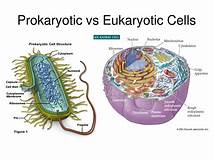
Week 1: Introduction of Prokaryotes and Eukaryote Cell, Animal and Plant Cell Structure
During the 1950s, scientists developed the concept that all organisms may be classified as prokaryotes or eukaryotes. The cells of all prokaryotes and eukaryotes possess two basic features: a plasma membrane, also called a cell membrane, and cytoplasm. However, the cells of prokaryotes are simpler than those of eukaryotes. For example, prokaryotic cells lack a nucleus, while eukaryotic cells have a nucleus. Prokaryotic cells lack internal cellular bodies (organelles), while eukaryotic cells possess them. Examples of prokaryotes are bacteria and archaea. Examples of eukaryotes are protists, fungi, plants, and animals (everything except prokaryotes).
Eukaryotic cells are found in plants, animals, fungi, and protists. They generally have a nucleus—an organelle surrounded by a membrane called the nuclear envelope—where DNA is stored. There are a few exceptions to this generalization, such as human red blood cells, which don’t have a nucleus when mature. Eukaryotic cells are typically larger than prokaryotic cells, ranging from around 10 to 100 μm in diameter. While many eukaryotes consist of multiple cells, there are also single-celled eukaryotes.
Animal cell
Animal cells contain a wide variety of organelles to help them carry out their functions.
Plant cell
Plant cells have a cell wall and use organelles called chloroplasts to carry out photosynthesis.
Reference:
Text Book of Cell & Molecular Biology For B.S. & M.Sc. Zoology by Dr. Riaz-ul-Haq Ramay
Text Book of Botany C by Dr. Ria-ul-Haq Ramay


